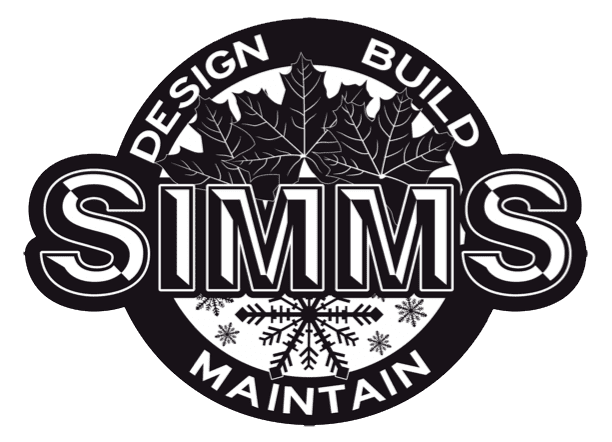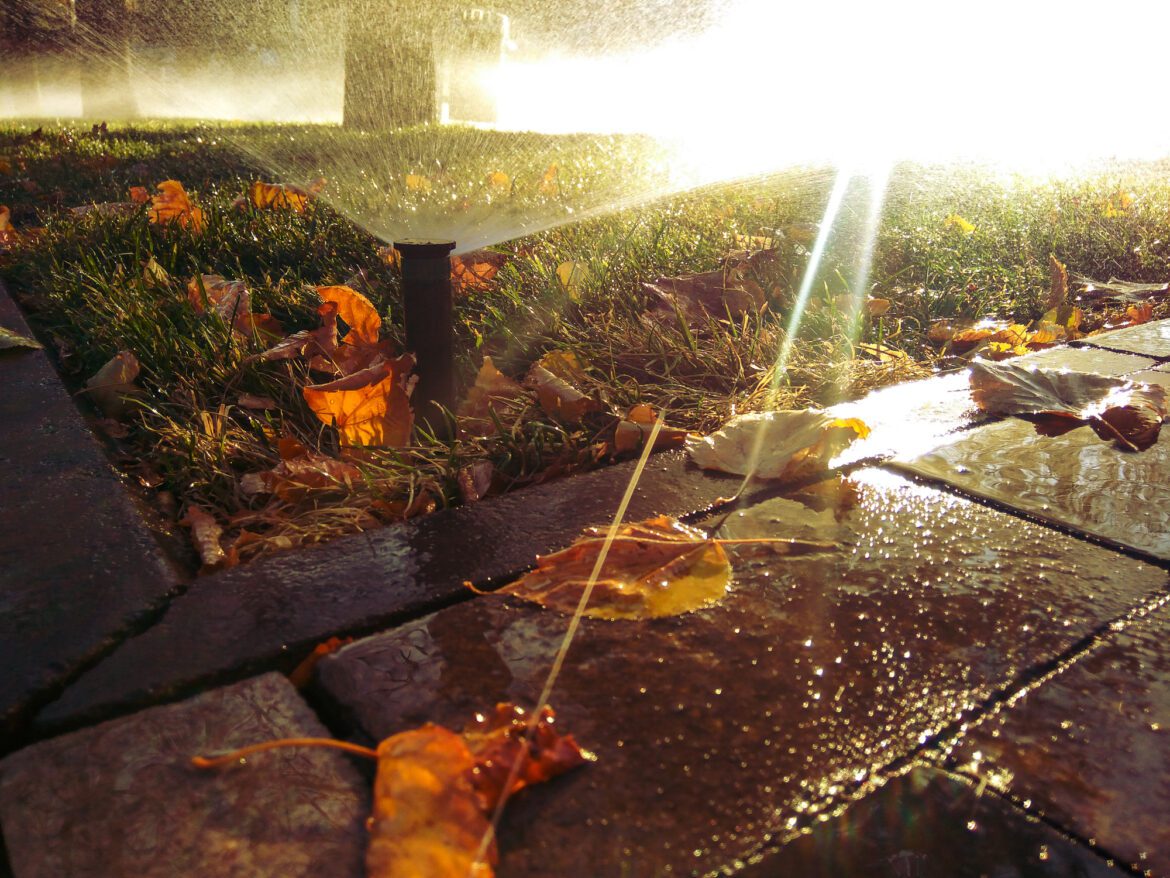TL;DR: Sprinkler winterization in Salt Lake City protects your irrigation system from freeze damage. Complete the process between late October and early November by blowing out water from all zones with an air compressor, draining backflow preventers, and shutting down your controller. Professional service runs $100-150 for typical homes.
Salt Lake City winters freeze pipes, crack valves, and damage backflow preventers when water expands in your irrigation system. Sprinkler winterization removes that water before temperatures drop below 32°F—typically late October through early November. This six-step guide gives you tips on the blowout process, or contact Simms Landscape at (801) 285-9343 for professional irrigation services.
30+ years serving Salt Lake County means we’ve seen what freeze-thaw cycles do to unprotected systems. Repairs run $300-1,200. Winterization costs $100-150. The math is simple.
Why Winterize Your Sprinkler System in Salt Lake City
Water left in sprinkler lines freezes when temperatures drop. Ice expands. PVC pipes crack. Valves split. Backflow preventers shatter.
In Salt Lake City’s clay soil, low spots trap water even after basic drainage. Our freeze-thaw climate, where temps swing above and below freezing daily, accelerates damage. One unprotected winter can destroy a $5,000 irrigation system.
Professional blowouts use 185+ CFM air compressors to push every drop from your lines. Home compressors lack the volume. DIY attempts at sprinkler winterization often leave water pooling in valve boxes and pipe elbows.
When to Winterize Sprinklers (October-November Timing)
Schedule your sprinkler blowout for late October or early November in Salt Lake City. Watch nighttime lows. Once temps consistently hit freezing, you’re cutting it close.
Simms typically runs winterization from mid-October through November across Salt Lake County—Sandy, Draper, South Jordan, Murray, and surrounding areas. Early birds avoid the rush and guarantee their slot before the first hard freeze.
Waiting until after Thanksgiving? Too late. Pipes may already be damaged.
Step-by-Step Sprinkler Winterization Process
Step-by-Step Sprinkler Winterization Process
Step 1: Turn Off the Main Water Supply
Locate your irrigation system’s main shut-off valve. Check near your water meter, in the basement, or in a valve box near the street. Turn it clockwise until fully closed.
This stops new water from entering the lines during blowout. Leave your house water on, this valve only controls the sprinkler system.
Step 2: Drain the Backflow Preventer
Find the small petcock valves (drain valves) on your backflow preventer. Open them to release standing water. Leave them open all winter.
If your backflow sits above ground, wrap it with an insulated cover. Salt Lake City’s freeze-thaw swings will crack an exposed backflow in one season. Replacement costs $400-800.
Step 3: Connect the Air Compressor
Attach a professional-grade air compressor to your system’s blowout valve or connect directly to a sprinkler zone valve. You need 185 CFM minimum for thorough water removal.
Most home compressors put out 3-6 CFM. Not enough. Rental equipment may work for small systems (4 zones or less), but lacks the power for typical Salt Lake City homes with 6-8 zones.
Simms uses trailer-mounted compressors, $20,000+ equipment designed for Utah irrigation systems. Call (801) 285-9343 if you don’t have access to professional gear.
Step 4: Blow Out Each Zone Systematically
Start with the zone farthest from your compressor. Activate that zone at your controller. Gradually increase air pressure to 40-80 PSI (check your system’s limits—don’t exceed manufacturer specs).
Watch the sprinkler heads. Water sprays out, then mist, then air. When you see only mist or dry air for 30-60 seconds, that zone is clear. Typical time: 1-2 minutes per zone.
Move through all zones. Don’t skip any. Water trapped in one zone will freeze and crack that section.
Step 5: Shut Down the Controller
Turn off your sprinkler timer or controller. Unplug it or set to “rain mode” to prevent accidental activation. Remove any backup batteries. You don’t want zones triggering in January when pipes are dry and temps are below zero.
Step 6: Insulate Exposed Components
Wrap above-ground pipes, valves, and backflow preventers with foam insulation or insulated covers. Secure with zip ties or tape. In Salt Lake City’s climate, this extra layer prevents damage on those 10-degree nights. Check covers mid-winter if we get heavy snow, make sure they’re still sealed.
Troubleshooting Common Issues
Water still dripping from heads after blowout
Run a second cycle. Clay soil in Salt Lake Valley creates low spots that trap water. Two passes clear stubborn pockets.
Compressor doesn’t have enough power
Home units won’t cut it for most systems. Rent professional equipment (185+ CFM) or call Simms at (801) 285-9343. We handle Sandy, Draper, South Jordan, and all of Salt Lake County.
Can’t locate the blowout valve
Check near your main shut-off or backflow preventer. Still can’t find it? Simms inspects your system, locates valves, and performs the winterization. Typical cost: $100-150 for 6-8 zone homes.
Professional Winterization vs DIY
DIY Approach:
- Rent air compressor: $40-60
- 2-3 hours of work
- Risk: insufficient CFM leaves water in lines
- No inspection of valves, heads, or backflow condition
Simms Professional Service:
- $100-150 flat rate (6-8 zones)
- 20-30 minutes on site
- 185+ CFM trailer-mounted compressor
- Full system inspection included
- 30+ years experience with Salt Lake City irrigation systems
We also schedule your spring sprinkler startup while we’re there. One call, both seasons covered.
Frequently Asked Questions
When should I winterize my sprinkler system in Salt Lake City?
Late October through early November is ideal, before temperatures consistently drop below 32°F. Simms typically schedules winterization blowouts from mid-October through November. Waiting too long risks freeze damage to pipes and valves.
How much does professional sprinkler winterization cost in Salt Lake City?
Most Salt Lake City homes with 6-8 zones pay $100-150. Larger properties or systems with more zones may cost $150-200. Simms provides flat-rate pricing with no hidden fees—30+ years serving Salt Lake County.
Can I use my home air compressor to winterize my sprinkler system?
Most home compressors lack the air volume (CFM) needed for thorough blowouts. You need 185+ CFM to properly clear water from all zones. Simms uses professional trailer-mounted compressors designed for Utah irrigation systems.
What happens if I don’t winterize my sprinklers?
Water left in pipes freezes, expands, and cracks PVC pipes, valves, and backflow preventers. Repairs typically run $300-1,200 in Salt Lake City. A $100-$200 winterization prevents costly spring surprises.
Do I need to winterize every year in Salt Lake City?
Yes. Salt Lake City’s freezing winters require annual winterization. Even mild winters have freeze-thaw cycles that damage unprotected systems. Simms offers seasonal packages including fall winterization and spring startup.
Ready to Protect Your System?
Call Simms Landscape at (801) 285-9343 or request an estimate. We also handle sprinkler repair and backflow testing and certification year-round across Salt Lake County.
Serving Sandy, Draper, South Jordan, West Jordan, Murray, and surrounding areas. Clear scopes. Clean jobs. 30+ years of experience.
Back to Professional Irrigation Services.

